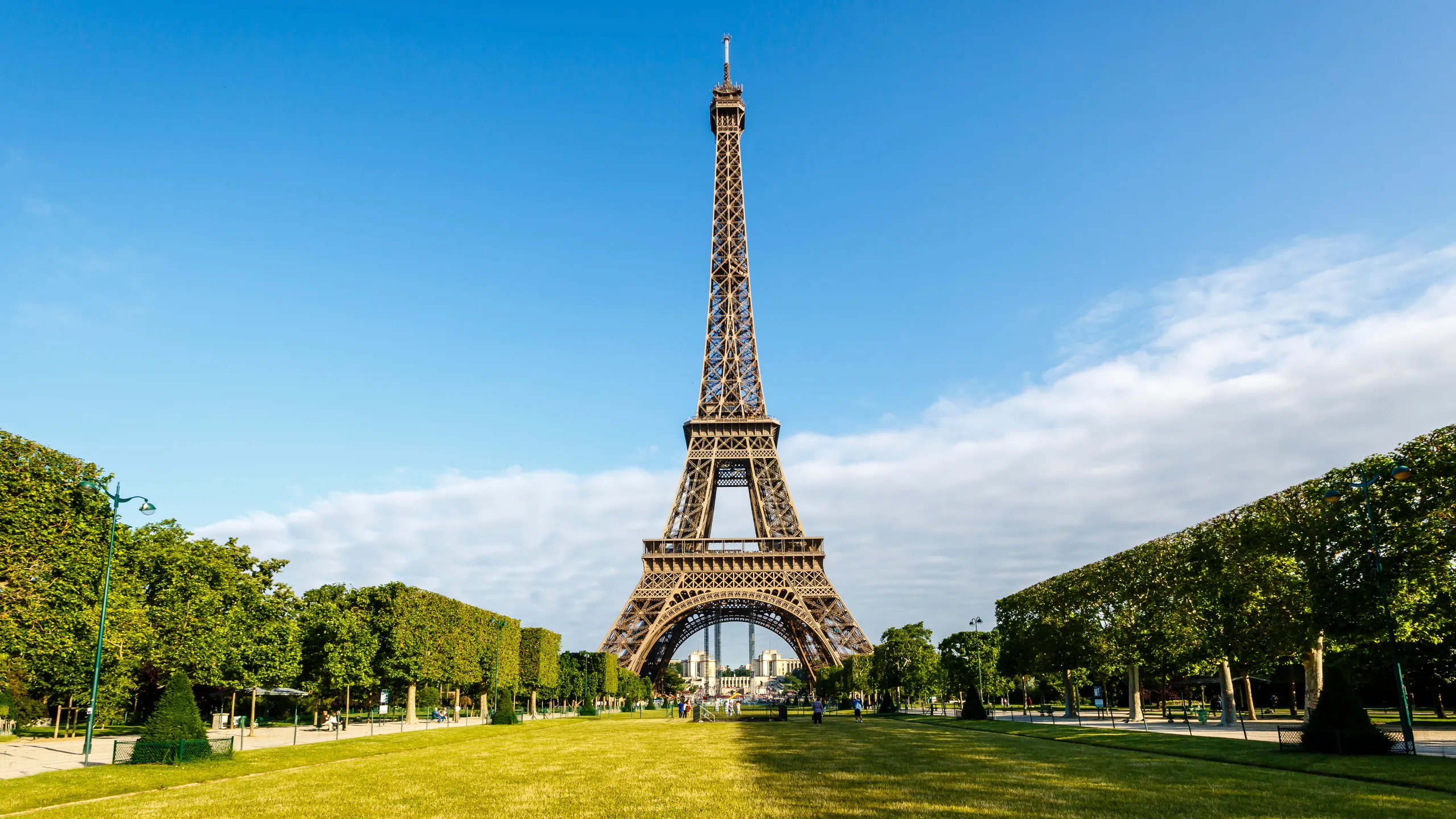 The Eiffel Tower is one of the most recognizable landmarks in the world and a symbol of Parisian elegance and innovation. Towering above the city at 330 meters (1,083 feet), the Eiffel Tower draws nearly 7 million visitors each year, making it the most-visited paid monument in the world.
The Eiffel Tower is one of the most recognizable landmarks in the world and a symbol of Parisian elegance and innovation. Towering above the city at 330 meters (1,083 feet), the Eiffel Tower draws nearly 7 million visitors each year, making it the most-visited paid monument in the world.
But the Eiffel Tower is much more than just a tourist attraction—it’s a feat of engineering, a historical monument, and a cultural icon. In this article, we’ll explore the history of the Eiffel Tower, interesting facts, visiting tips, and why it remains a must-see destination.
History of the Eiffel Tower
The Eiffel Tower was built as the entrance arch for the 1889 Exposition Universelle (World’s Fair), held in Paris to celebrate the 100th anniversary of the French Revolution.
🏗️ Designed by Gustave Eiffel
-
The tower was designed by Gustave Eiffel’s engineering company, though the actual design was created by Maurice Koechlin and Émile Nouguier, two senior engineers working under Eiffel.
-
Construction began in 1887 and took just over two years, completing in 1889.
At the time, it was considered controversial. Many Parisians and artists criticized it as an "eyesore" that didn’t belong in the romantic cityscape. However, public opinion shifted dramatically once the tower was completed.
Structure and Design
The Eiffel Tower was a technological marvel of its time and remained the tallest man-made structure in the world until 1930, when New York’s Chrysler Building surpassed it.
📏 Key Structural Facts:
-
Height: Originally 300 meters (now 330 m with antennas)
-
Weight: 10,100 tons
-
Material: Iron (wrought iron lattice)
-
Steps: 1,665 steps to the top (but elevators are available)
-
Paint: Repainted every 7 years, using about 60 tons of paint
Its lattice structure made it both lightweight and incredibly strong, able to withstand wind forces and temperature changes that cause it to expand and contract.
Eiffel Tower Today
Today, the Eiffel Tower is a global icon and an enduring symbol of French innovation, romance, and resilience. It is illuminated every evening and sparkles for 5 minutes every hour on the hour after sunset, using 20,000 light bulbs.
🗺️ Levels of the Tower:
-
First Floor: Glass floor, exhibits, restaurants
-
Second Floor: Viewing platform and Michelin-starred restaurant Le Jules Verne
-
Summit: Panoramic view of Paris, Gustave Eiffel's private office
Interesting Facts About the Eiffel Tower
-
🗼 Not meant to be permanent – It was originally planned to stand for only 20 years.
-
🧪 Used for scientific experiments – Eiffel allowed scientists to use it for radio and wind experiments.
-
🎥 Featured in over 100 films – From Midnight in Paris to Mission: Impossible, it's a pop culture staple.
-
💍 Popular for proposals – Thousands propose marriage at or near the tower each year.
-
🌍 A global replica icon – There are replicas in Las Vegas (USA), Tokyo (Japan), Shenzhen (China), and more.
How to Visit the Eiffel Tower
🎟️ Ticket Options:
-
Stairs to 2nd floor: Cheapest option, but physically demanding.
-
Elevator to 2nd floor: Great for families and general sightseeing.
-
Elevator to the summit: Highest access and best panoramic views.
🕒 Opening Hours:
-
Open every day
-
Typically from 9:00 AM to 12:45 AM
-
Last entry around 11:45 PM
🧭 How to Get There:
-
Metro: Line 6 (Bir-Hakeim) or Line 9 (Trocadéro)
-
RER: Line C (Champ de Mars – Tour Eiffel)
-
Bus: Lines 42, 69, 82, 87
Best Time to Visit the Eiffel Tower
The best time to visit depends on what experience you’re looking for:
-
Sunset: Offers breathtaking views of the city bathed in golden light
-
Night: The tower sparkles and Paris glows, perfect for photos
-
Early morning: Avoid the crowds and enjoy a peaceful experience
🗓️ Best months:
-
April to June and September to October – Mild weather, fewer tourists
Eiffel Tower Nearby Attractions
-
Seine River Cruises – Depart from just below the tower
-
Trocadéro Gardens – Offers one of the best photo spots
-
Champ de Mars – Perfect for picnics with Eiffel Tower views
-
Musée du Quai Branly – A museum of world cultures, just a short walk away
Sustainability and Modern Updates
The Eiffel Tower has embraced eco-friendly initiatives:
-
Installation of solar panels and wind turbines
-
Use of LED lighting for nightly illuminations
-
Recycling systems in restaurants and shops
Why the Eiffel Tower Is a Must-See
Whether you're visiting Paris for the first time or returning, the Eiffel Tower never loses its charm. It offers a unique blend of architectural genius, historical significance, and breathtaking beauty.
From romantic dinners at its restaurants to Instagram-worthy photo ops, the tower is more than a tourist attraction—it’s a once-in-a-lifetime experience.
Final Thoughts
The Eiffel Tower is not just the heart of Paris—it’s the heartbeat of French culture and creativity. Whether you marvel at it from the ground or climb to its summit, this iron lady never fails to leave an impression.
Make sure to include it in your travel plans and prepare for a moment you’ll never forget.

You must be logged in to post a comment.